A new vision for industrial robots
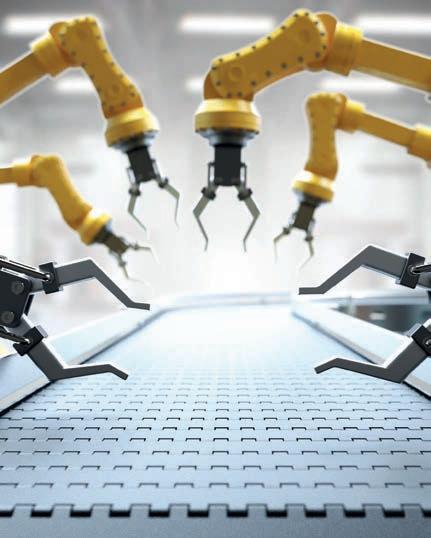
Robots are probably the encapsulation of modern
Despite this, the uptake of robots in the UK is actually very low. In its recent annual report, the International Federation of Robotics (IFR) estimated ‘robot density’ for a range of countries. South Korea, for instance, has 1,000 robots installed per 10,000 workers – the top of the list. Further down the table, Germany has 397, the USA has 274 and France has 163. The UK languishes in 24th place – between Hungary and Norway – with 111 robots per 10,000 employees.
However, this gure varies according to the industry: the density for the car industry is 824 robots per 10,000 employees; for the rest of industry, it is 60.
The report states: “The UK has a strong manufacturing industry that has surprisingly low annual robot installation counts.”
This can be seen as both a problem and an opportunity. The problem lies in the fact that the UK is lagging behind so many of its industrial and economic peers. However, it’s also an opportunity because it o ers the chance to reboot – and embrace the wider bene ts of automation. Starting from a
low base means that even modest extra investment in automation could have a noticeable e ect.
“It’s important to do this for UK plc,” says Allan Anderson, chairman of UKIVA. “We have poor productivity – and other countries are investing more quickly and heavily in automation.”
Another factor to bear in mind is that vision systems can further enhance the productivity of robots. There are more details on robot vision systems in our centre section starting on page 11.


“It’s becoming more common for robots to incorporate a vision system – and they achieve more when they do,” he says.

manufacturing. They are used across industry –on car assembly lines, in packaging, food production and elsewhere.
Do you need help developing your machine vision system?

Led by our obsession for customer happiness, we are a European business born out of engineering expertise in machine vision. By combining our expertise, experience and certified engineering excellence we supply the latest machine vision products, while innovating next generation systems.
clearview-imaging.com
Obsessed with Customer Happiness
Certified Machine Vision Experts
Dedicated Engineering Professionals
APPLICATION ARTICLES ASSOCIATION NEWS

Editorial material in this section is provided by UKIVA Members. Content accuracy is the responsibility of individual UKIVA Members.
FISHER SMITH www.fishersmith.co.uk
Applying vision systems to laser drilling
RNA Automation has developed an automated laser drilling process cell and inspection system – for a range of plastic moulded components – with help from a machine vision system designed by Fisher Smith.
The system incorporates a bowl feeder, vision-guided robot, walking beam transfer system, laser drilling system, vision inspection stations and a control system. RNA’s client is a manufacturer of gas detectors for the mining industry.
The vision system incorporates three camera stations, with the ability to inspect each component for hole position, entry hole size and exit hole size. Components that fail the inspection are sent to a reject bin. The inspection system – which is precise to +/- 1 micron – helps to improve both uptime and productivity for the manufacturer.
The application presented a number of technical challenges, especially in relation to the measurement of the drilled hole size (which is from 15-50µm). Due to the functionality of the device, both the size of hole at entry and exit are measured. Two 4-megapixel cameras – using Vision & Control magnifying telecentric lenses – are used. However, the depth of eld of the lens (0.005mm) for such a small eld of view (1.2mm) is far less than the variation in material thickness.
To overcome this, Fisher Smith speci ed precision servo stages to move the camera/ optics and illumination vertically – while continually acquiring images – and then used a custom algorithm to identify the image where the hole edge is in focus. Fisher Smith developed further algorithms to measure the hole size.
This system can handle various components (11 variants). Each component variant is given a unique barcode containing all the necessary parameters. When it is scanned, the data is retrieved by the control PLC/HMI – a er which the operator should change the tooling models to meet all the parameters.
INDUSTRIAL VISION SYSTEMS
www.industrialvision.co.uk
Touch sensor manufacturer raises product yields
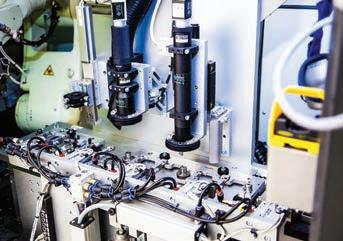
Industrial Vision Systems (IVS) has helped Zytronic – a manufacturer of touch sensors – to an automated vision and laser welding system.

The automated system – an investment of around £400,000 – allows Zytronic to raise productivity and yields – and improve manufacturing capability. It combines 2D camera vision with precision drives, and custom so ware to deliver precise, contactless laser welding. This allows Zytronic to complete critical soldering processes on its touch sensors in record time.
“This investment supports our continued drive for yield improvements and accelerating throughput,” said Mark Cambridge, managing director of Zytronic.
The new production cell allows precise soldering of Zytronic’s 10-micron diameter copper sensing elements to the microns-thin gold/tin pads within the exible tails that connect to proprietary touch controllers.
“This new, system complements the one we installed in another cleanroom a few years ago and mitigates the risk associated with only having one laser soldering system available to production,” he added.
The laser soldering unit is seen as a modern tool for the future of manufacturing technology. Its so ware incorporates operator and material traceability, automatically saving data to Zytronic’s manufacturing and QA system.
Earl Yardley, director of Industrial Vision Systems, added: “This new production cell combines the latest automation know-how and is a pivotal technology for precision laser welding with closed-loop vision control. It will accelerate Zytronic’s touchscreen manufacturing capability and exibility.”
NEW VISION FOR UKIVA’S FUTURE
UKIVA has announced a new committee – which has devised a programme of change to help the vision sector grow and ourish. The strategy focuses on four key areas:
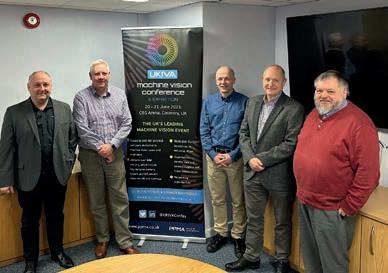
n the Machine Vision Conference (MVC);
n membership;
n education and training;
n Vision in Action magazine and marketing.
For MVC, UKIVA intends to keep improving the event by expanding its size and attracting more delegates.
The rst step is already in place: extending the duration of this year’s show to two full days. Building a diverse audience of OEMs, machine builders, end users and academics will help make MVC the ‘go to’ event for the industry.
UKIVA also wants to grow its membership –by extending the bene ts it o ers. These include: preferential rates to exhibit at MVC; media exposure through Vision in Action; and discounted rates for training. By also creating a machine vision community – where ideas are exchanged in dedicated networking sessions – UKIVA is con dent of expanding from 50 to 70 core members within two years.
UKIVA will also expand the quality, size and reach of Vision in Action (ViA) – in both the print and digital versions. Initiatives such as ‘ask the expert’ sessions, an increased digital presence and live-streamed discussions will help to li the magazine – and o er an enhanced product to members. Alongside this, enhancing our presence online and through social channels will further boost UKIVA’s reach.
Education and training are vital to professional development. UKIVA intends to explore a certi ed scheme for vision solution providers – and another for machine vision training courses. O ering these will make membership more attractive – and boost numbers further. In addition, UKIVA members will o er live online STEM sessions – helping to create good publicity while highlighting the vision industry as an employer.
By focusing on these four critical areas, UKIVA aims to expand the use of machine vision in the UK – and make it easier for members to boost sales of their products and services.
Like a webcam, but for industrial purposes
Plug in the camera, focus, get the image - this is especially useful when object distances change frequently. In industrial environments, webcams are used in many kiosk and robotics applications. However, these models are usually designed for the consumer market. With uEye XC, IDS Imaging Development Systems has recently launched an industrial camera with autofocus that is just as easy to use as a webcam. All that is required to set up and operate the 13 MP USB3 camera is a cable connection. It then delivers high-resolution, detailed images and videos and can easily manage changing object distances.
Ultra-fast cameras for high-speed processes



Capturing fast-moving scenes in all their details requires not only the right sensor, but also a high-performance transmission interface. For this purpose, IDS now o ers uEye Warp10, a 10GigE industrial camera family. Compared to 1GigE cameras, the models achieve up to 10 times the transmission bandwidth. They are also about twice as fast as cameras with USB 3.0 interfaces. The advantages are particularly evident when dynamic scenes are to be captured, monitored and analysed in all details and without motion blur. This benefits e.g. inspection applications on the production line with high clock speeds or image processing systems in sports analysis.

Automation based on image analysis with AI
AI opens up many new possibilities in image processing, but how can you get started quickly and easily? This is where an AI-based vision system like IDS NXT comes into play. The all-in-one system consists of intelligent
industrial cameras plus so ware environment which covers the entire process from creating to running AI vision applications. It is particularly user-friendly and can be operated even without prior knowledge of deep learning or application programming. In addition, expert tools enable open-platform programming, making IDS NXT cameras highly customisable and suitable for a wide range of applications.
MACHINE VISION CAMERAS AND COMPONENTS FOR YOUR APPLICATION


Do you need High Speed Multispectral inspection for your process line ?
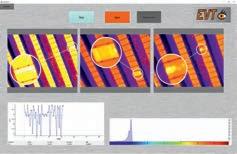
ALRAD supplies Vision Systems for all wavelengths from Ultraviolet through visible, near-infrared, shortwave infrared (SWIR) and thermal (LWIR). We also offer Polarised image sensing cameras
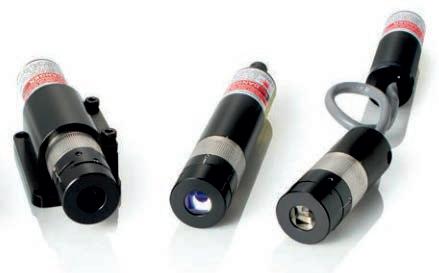
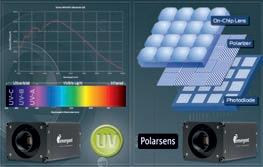

Do you need to carry out complex quality inspection checks on your production line ?
We provide Industrial Camera and Machine Vision Systems for all your applications.
Do you inspect heat-sealed joints, plastics welding or temperature distribution during your process ?
Our Thermal Vision Software and Thermal Camera Systems give you the hidden picture.

Seeing in more detail
With 50+ years experience in Machine Vision, we can calculate and recommend the best visible and non-visible wavelength optics to make the most of your vision investment.
Do you have complex topgraphy or highly reflective parts to inspect ?
We provide a wide range of innovative lighting solutions to support your application.

Do you need to inspect or measure in 3D ?
StingRay is a high-performance top-hat-profile laser with a choice of fan angles to create the line you need. Please call us for full specifications and performance information.
Wha t is your application ? We have many more solutions from our wide range of cameras, lenses, lighting, interface cards, cables, housings, software and much more. Please contac t us to discuss
Telephone: 01635 937000
Email: imaging@alrad.co.uk
Web:www.alrad.com

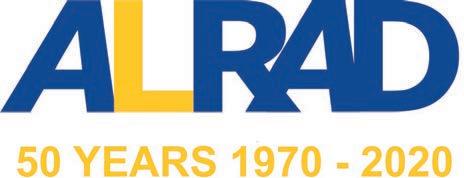
APPLICATION ARTICLES
Tracking diesel injector nozzle production
Bosch is using a vision inspection system from Matrox Imaging to ensure quality, traceability and veri cation of critical engine components.
Its process to make diesel injector nozzles involves the operator selecting speci c parts to be made, then feeding the components into a machine for production. A erwards, the operator withdraws the inspected and packaged parts.
Bosch needed a vision system that could improve the mark-reading and veri cation process, as well as the traceability of the nozzles. The aim was to reduce the number of parts requiring post-production manual inspection.
The updated vision system comprises a quad-input Matrox Concord PoE frame grabber and Matrox Indio I/O card inside an industrial PC with an Intel i7 core running Matrox Design Assistant X so ware, which controls the whole system. Three front light bars from LumiVision ensure adequate illumination.
An industrial Kuka robot correctly positions the metal components so they can be photographed by three GigE Vision cameras from Teledyne Dalsa. A er the image capture, the robot repositions the injector nozzles further down the line.
The cameras form an integral part of the vision system. Two perform optical character recognition and optical character veri cation, while the third reads a barcode label.
A clever part of Bosch’s system is how it uses an area scan camera – rather than a line scan version – to scan the cylindrical injectors. This involves collecting a series of images of each nozzle as it rotates, and then stitching the centre stripe of each image together to create an unwrapped, attened picture.
Once unwrapped, the numerical codes in each image can be read using the StringReader step in Matrox Design Assistant X. This allowed Bosch to reduce setup time, simplify the installation and reduce costs.

Using the so ware, Bosch was able to pack three inspection and veri cation processes into a single vision system, which signi cantly decreased overall system cost. Using the new vision system, the plant achieves production volumes of 7,000 parts per day and has decreased the daily percentage of false rejects to 5%, a signi cant improvement compared to previous iterations.
OMRON www.industrial.omron.co.uk
Camera system improves tablet inspection
IMA Active says that its continuous tablet-coating machine – called Croma – can now make more accurate assessments of coating uniformity thanks to the addition of an Omron vision system.

“The Quality by Design (QbD) concept is based on principles that de ne the desired quality pro le for both the product and production through the identi cation of key attributes,” said Marco Minardi, automation manager at IMA Active.
“To ensure the right and most appropriate levels of safety, real-time and online monitoring strategies are essential.”
The assessments are more accurate in terms of both the surface of each individual tablet and to ensure that all tablets are coated consistently.
Market standards require each tablet to be uniform, both in terms of its outer coating and in relation to other tablets in the same batch. Processing all tablets in the same way is the rst step to ensuring a uniform appearance.

To do this, IMA Active used an Omron industrial vision system equipped with a high-speed colour camera (nominal frame rate of 163 fps) and a dome light. The system can continuously capture images while eliminating other misleading elements, such as shadows and re ections, that can impact the inspection.
Omron’s vision systems use customisable industrial cameras that can be programmed in standard languages and feature common, up-to-date communication protocols.
Giuliano Maria Emiliani, so ware engineer at IMA Active, added: “We can monitor production easily and e ciently, processing every frame captured by the camera on the y.”
First, the system detects each individual tablet. The position of the tablet in the next frame is then predicted based on physical considerations, making it easy to follow its entire journey. This means the coating of each tablet is only inspected once – reducing computational load. Based on the data collected, signi cant indicators of coating uniformity are calculated and sent in real time to the machine via OPC UA.
Omron o ered technical support to help IMA choose the best solution and ne-tune the system. This made it possible to assess the use of scalable solutions for the preliminary test process – which ruled out standard vision systems in favour of open technologies that o ered a greater degree of freedom, it said.


Plug and Play for industrial image processing









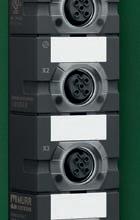

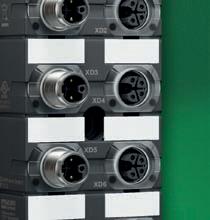



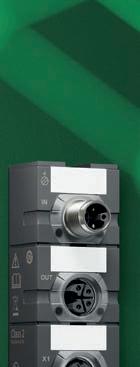











With Murrelektronik‘s Vision Installation Solutions, you can get started with industrial image processing and immediately benefit from the advantages with little effort, guaranteeing a quick return on investment.










APPLICATION ARTICLES
SICK
Camera system for EV battery inspection
In collaboration with automotive OEMs, Sick has developed a machine vision system to inspect high-voltage batteries during electric vehicle assembly.
The ‘out-of-the-box’ solution – with all necessary hardware and its own dedicated so ware – enables easy con guration of Sick’s Ranger3 high-de nition camera technology into a dedicated inspection cell.
The High Voltage Battery Inspection System (HVS) is designed for installation on an EV assembly line immediately before the battery is connected to the car’s body. Even a small object could cause surface damage to the battery that could risk production downtime – or lead to costly vehicle recalls. All batteries must therefore be inspected for foreign objects to a very high resolution.
During assembly, there are frequent changes between manual and partially-automated production steps, meaning that maximum care and precision are required. If a foreign object, such as a tiny screw or washer, ends up on the battery surface it could cause scratches, damage or a puncture. These objects, some just millimetres in size, are di cult to see –especially as they are o en the same colour as the metallic surface of the battery housing.
HVS uses up to eight Ranger3 cameras and detection algorithms, hosted on a programmable Sick integration device, to evaluate high-precision results. It comprises all the elements needed to con gure an inspection cell, including cameras with integrated lasers, to enable image acquisition to pro le the surface of the battery using laser triangulation.
Using di erent coloured lasers and lters, together with the dedicated on-board image processing, the inspection results from each separate camera system can be reliably processed together into a single output with a height resolution down to less than 1mm.

ZEBRA TECHNOLOGIES www.zebra.com
FIS helps logistics firm make 50% time saving
Noerpel has achieved more than 50% time savings for inbound storage operations at a logistics site, thanks to Zebra’s xed industrial scanning (FIS) solution.
The company receives up to 25 truckloads of goods each week at the site from a fashion and lifestyle retail customer. The associated data is logged in Noerpel’s enterprise resource planning (ERP) system, and each box is redistributed to its nal destination.
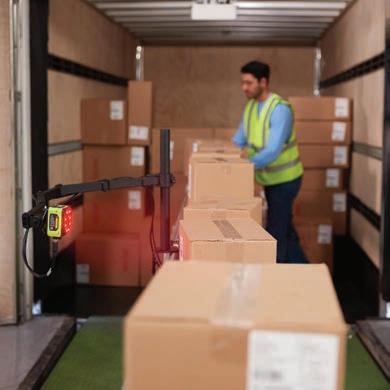
A er testing a variety of FIS systems, Noerpel selected Zebra FS40 xed industrial scanners and ZT411 industrial printers to accelerate goods receipt and onward handling. The solution was chosen for its scan rate of almost 100% on inbound shipment labels – including those that are poorly printed, faded, damaged or under shrink wrap (which can cause re ections). Noerpel was already using Zebra mobile devices and printers in its wider warehouse daily operations, so integrating the Zebra FIS solution was a natural step.
“Zebra’s xed industrial scanning solution has enabled us to e ciently and smoothly integrate a new customer’s speci ed logistical processes into our Langenhagen warehouse,” said Sven Dopsla , head of logistics at Noerpel’s Hannover-Langenhagen site.
During the rst ve months a er its installation, the FIS solution has allowed Noerpel to autonomously scan and validate around 700,000 packages. As the complete process for each package only takes three seconds, follow-up processes have been automated, and sta now only need to intervene occasionally.
ACROVISION
www.acrovision.co.uk

Pharma company benefits from inspection system
Acrovision has supplied a pill inspection and blister pack barcode and text validation system to a leading UK pharmaceutical company.
Its Validator CFR pill inspection vision system has been retro tted to a Marchesini blister packing machine. The application required 100% inspection of a blister to ensure the correct size and colour of tablet or capsule has been dosed into the blister. Any missing tablets, incorrect variant or broken tablets are rejected in a controlled method.
The system checks the variable data printed on the rear foil. This includes inspecting multiple lines of text (OCR) over 14 separate blister pockets. Incorrect or poor-quality barcodes and text are rejected.
Because it is used in a pharmaceutical environment, the solution must conform to GAMP and 21CFR part 11 standards. These require compliance in a number of areas, including: electronic signatures and records; back-up and restore routines; and validation. Validator o ers an easily navigable, exible interface that was developed with the end user to ensure that it met their needs. Retro tting the system to a current Marchesini blister packing machine required bespoke bracketry to be designed and tted to ensure an ‘as new’ look.

The World’s First SWaP Optimised ½” / VGA InGaAs Sensor with VIS-SWIR Response
Raptor Photonics Owl 640 T is ultra-compact and rugged. The camera uses a Thermometric cooler to stabilise the sensor temperature with no fan being used Best

Features:
■ ½” Sensor Format | Better for optical design, ideal for OEM integration into Electro-Optic systems

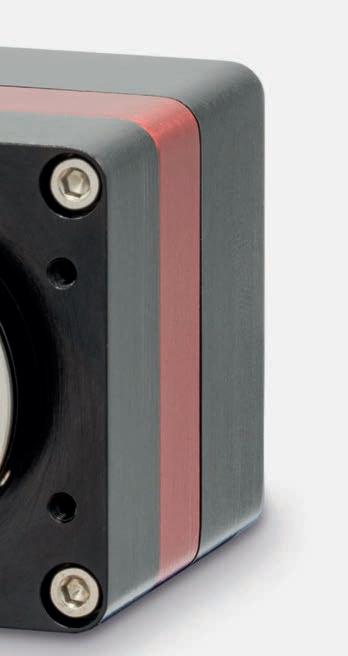


■ 10µm x 10µm Pixel Pitch | Compatible with VIS-SWIR illuminators, markers & pointers
■ <50 Electrons Readout Noise | Enables a high VIS-SWIR detection limit
■ On-board Automated Gain Control (AGC) | Enables clear video in all light condition
■ On-board Intelligent 3-point NUC | Enables highest quality photos
Quantum Design UK and Ireland Ltd
1 Mole Business Park, Leatherhead, Surrey KT22 7BA
Tel: +44 (0)1372 378822 | Email: info@qd-uki.co.uk
For more information visit
qd-uki.co.uk
ROBOTS AND VISION SYSTEMS
Robots are a key automation tool, banishing many forms of repetitive manual work – whether it’s moving boxes around a factory or removing items from a production line. They are fast, e cient and tireless. One emerging trend is to combine them with a vision system. But why might you want to do this?
There are many reasons why a ‘seeing’ robot is better than a ‘blind’ one. The main one is that a vision system imbues a robot with far more sophistication and capability. For instance, a vision system allows a robot to interpret its environment in a dynamic way – and respond according to new information that it receives.
Imagine items coming down a production line – always in exactly the same position. A robot that removes these products can work ‘blind’ until the end of time. Now, switch things up. Perhaps the line contains a range of products – some at, some bulky, some delicate. Programming a ‘blind’ robot to nd or move these products accurately now becomes impossible. A vision system would allow the robot to recognise each object and act accordingly.
separate objects on a recycling line quickly and accurately. The system uses an AI-based system that ‘learns’ to recognise objects on the line. The use of AI in vision systems is another growing trend.
Co-locating MVC 2023 and Automation UK in Coventry later this year will stimulate the use of vision systems with robotics
A good example of this is from UK company RecyclEye. It augments robots with a vision system – allowing them to
However, items on a conveyor are only one area in which robot vision systems can be used. Below, we highlight a number of ways that robots could benefit from adding a vision system.
Overleaf, we explain more about the benefits of adding a vision system, list some of the key technologies involved, then round off with some real-world examples that show how robot vision systems are already being used.
“Typically, fewer than a quarter of robots ship with a vision system,” says Allan Anderson, chairman of UKIVA. “That gives us a lot of scope for growth in this area.”
A WINNING COMBINATION
Technology is critical when creating a robot vision system. This breaks down into three key areas:
n Sensor: the way in which data is acquired
n Algorithm: so ware that analyses the acquired data
n Integration: ensuring that robot and vision system work in harmony

Sensor
A sensor or camera is the centrepiece of any vision system. It can take many forms but is typically characterised by being 2D or 3D. What’s interesting here is that, while a robot typically moves in three dimensions (with an x, y and z co-ordinate), the sensor or camera can be a 2D system.
An application such as pick-and-place typically requires a 3D sensor. However, if there is no variation in the ‘z’ dimension, a 2D system will su ce. Using 2D is a little like doing things with one eye closed. If the distance involved never changes – such as reaching for something at arm’s length – stereo vision is not required. However, a more complex task – like catching a ball – needs both eyes.
A real-world example is seen in inspection. Dot codes on car tyres, for instance, are typically embossed patterns. These are best acquired with a 3D vision system. Once acquired, data can be converted to 2D and read with a standard optical character recognition (OCR) system.
Algorithm
Many types of so ware – such as OCR – convert vision information into a useful form. A similar example is a barcode reader. While neither of these seem ‘robotic’, they can be used to interpret data that is gathered from

CO-LOCATED SHOWS
This year’s Machine Vision Conference (MVC) runs across two days at the CBS Arena in Coventry on 20-21 June 2023. In addition, it will be co-located with Automation UK – a new event focusing on robotics and automation – organised by BARA. Running the events in parallel will give users more opportunities to learn about both robotics and automation technologies – either in isolation or in combination.
FOR MORE INFORMATION:
MVC 2023: www.machinevisionconference.co.uk
AUTOMATION UK: www.automation-uk.co.uk

AI-driven 3D vision technology for robots can be used in applications such as bin picking, case packing and palletising

a robot vision system. A more complicated application (such as random bin picking) will need to use a technique like 3D pattern matching. This is because here, the robot needs to pick up objects with random poses. Using 3D pattern matching, the 3D camera/vision system can match objects in any orientation.Algorithms can be rule-based, meaning they follow xed instructions. However, it is becoming more common –especially with 3D systems – to use machine learning. Here, a system ‘learns’ – from examples – to interpret data ‘on the y’. This makes it more exible and powerful.
Integration
Just as many consumer devices are ‘plug and play’, it makes sense for a robot and a vision system to be compatible. Protocols such as ModBus, for example, can be used as the ‘glue’ between the robot and the vision system. At the end of the day, they must be able to speak to one another. Some machine vision so ware packages include interfaces that ease integration with a robot system. This helps to simplify the design and construction of such a system. Direct integration between vision system and robot o ers a number of bene ts:
n Easy communication: no need to use a PLC, or develop a program to communicate positions to the robot;
n Automatic calibration: manual calibration of the robot to the vision system’s co-ordinate system is unnecessary;
n Robot co-ordinate output: no need for calculations or PLCs to scale and translate outputs; and,
n Sample programming: basic robot programs are tuned for each robot manufacturer.
TYPICAL APPLICATIONS
Vision systems – used on their own – are used in a wide range of applications, and these can be extended or enhanced when combined with a robot.
Barcode scanning: barcodes can be ‘hidden’ on inaccessible parts of a product, so a sensor on a robot arm can be used to scan these quickly and accurately.
Quality control: the ability to inspect a product – such as an engine block – from several angles helps to raise quality without the need for multiple cameras.
Measurement/counting: a robot vision system can ensure that parts have the correct speci cations and are present in the exact quantities needed.
Picking, assembling, sorting: this covers a multitude of possibilities, from pick-and-place of delicate components, to de-racking of large components for addition to an assembly line.
Machine guidance: a vision system can help to improve safety – such as in the case of a cobot analysing the real-time location of human workers and other obstacles.
Mobile robots: autonomous mobile robots (AMRs) are becoming commonplace – proving highly reliable in transporting pallets around a factory oor, for instance.
END-USE INDUSTRIES
Vision-enhanced robots are used by several industries, for purposes including inspection, transportation and separation.

Automotive
The car industry is a major user of robots – which increasingly incorporate vision systems. Applications include: transferring parts from pallet to production line (depalletisation); bin picking of small parts; and checking quality. Mounting a camera on a robot arm, and moving it around a component, is ideal for inspecting large items such as engine blocks – which removes the need for multiple cameras.
Food & beverage
Food products are o en delicate – meaning that robot manipulation of them must be handled carefully. Robot vision systems can help achieve this. Recent examples include: using 2D and 3D point clouds to depalletise sacks of tea accurately (while preventing damage); and using a 3D vision-guided solution to handle individual portions of mozzarella– at a rate of 150 bags per minute.
Agriculture:
Robots with vision systems are used to perform a number of key tasks here, such as identifying and harvesting ripe fruit or vegetables, and monitoring crop health. In one case, a robot vision system has been developed to automate lettuce harvesting – li ing the vegetable from the ground and trimming it accurately.
Packaging
Vision systems have revolutionised packaging inspection – by checking package contents quickly and accurately. In combination with robots, they can go further – such as identifying empty spaces in a box or rack. In one recent example, a cobot (with vision system) was used to apply labels to all four sides of an outgoing package.
Other industries that typically bene t from robot vision systems include medical, electronics and recycling.

FUTURE VISIONS
VISION BENEFITS
Robots are a key factor driving the manufacturing industry. However, adding a vision system to a robot can o er several bene ts including accuracy, speed, exibility and throughput.
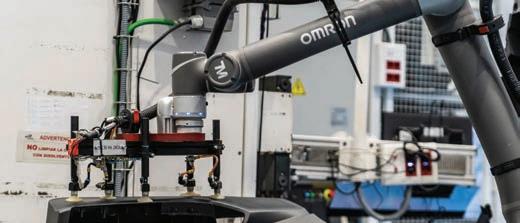
Accuracy: a vision system can help robots detect and locate objects more accurately – allowing them to perform tasks with greater precision. This might be seen on an assembly line, for instance, where a robot must handle objects with variable sizes or orientations.
Speed: as well as working faster than a human operator – especially on repetitive tasks – a vision-imbued robot can carry out more complex tasks smoothly. In this case, the underlying so ware that processes the signal is critical.
Flexibility: a vision system – possibly ‘trained’ using machine learning –helps robots to adapt to variable tasks and environments. Overall, this makes the system more exible and versatile. There are many examples –in industries from recycling to pick-and-place.
Quality: by detecting visible product defects during manufacturing, vision-enabled robots can provide an extra level of quality control. A good example of robot vision quality control is for inspecting automotive components such as engine components.
Error reduction: vision systems can nd and correct errors that occur during manufacturing, such as misaligned or incorrect products. This ‘early warning’ helps cut defects – and waste – by identifying defective products immediately.
Throughput: using a vision system, robots can identify and sort products more quickly, which results in increased throughput and –ultimately – faster delivery times.
Vision systems could sit at the heart of many automated systems in future – the most famous being self-driving cars. These are already a reality (on a very small scale). However, motorways full of autonomous vehicles will require sophisticated vision technology that links seamlessly (and instantly) to a mechanical system – in this case, the one that controls the car.
Another example is robotic surgery. Again, a few examples of this already exist. However, to become more widespread, patients must have full con dence in it. For this reason, the vision system that recognises the surgery area – and the system it ultimately controls – must be failsafe. This will require near-perfect communication between robot and vision system.
These technologies won’t appear out of thin air. A key stepping stone towards self-driving cars and robot surgery is a detailed understanding of how vision and automation technologies co-exist. One place this is happening is in the manufacturing sector.
Applications that look straightforward – such as automated bin picking – require sophisticated technologies (including so ware). However, while even an entry-level robot vision system is a substantial investment, users are beginning to see a faster return on investment (ROI). With technologies becoming easier – and less expensive – to implement, the break-even point comes closer.
CASE STUDIES: ROBOT VISION SYSTEMS
Robot vision systems are expanding in many areas – from manufacturing to farming. As systems become more a ordable and exible – such as ‘out of the box’ solutions – more users are implementing them. These examples show some speci c applications that combine robotics with a vision system. They cover a number of industries and end-use applications – and deploy a variety of technologies. By illustrating the variety of possibilities on o er, we hope to inspire readers in their own projects.
The system uses a Stäubli TS2-60 Scara robot, which needs to get a good grip on the bags without damaging them – or the bread inside. It has a lower error-rate than the previous manual handling system – and a higher throughput (of up to 30 packages per minute).

Profile sensors for welding
Wenglor has helped a customer develop an automated cell that uses a Cobot to weld bosses onto a cylinder.
The vision system needed to achieve several things: classify the cylinder type; locate all bosses; measure their diameters and output centre points; and be accurate to 0.5mm.
Wenglor suggested using pro le sensors with protective housings designed especially for welding. Advantages of this approach include: one ‘recipe’ for all cylinder sizes; no need for extra lighting; and the sensors were factory-calibrated. Other possible combinations of pro le sensors and robots are tote stack depalletising and picking/placing of cardboard stacks.
It says its MLZL WeCat3D 2D/3D pro le sensor is optimised for the demands of welding robots, especially optical tracking of weld seams. Interfaces are available for direct integration into various robot controls – as well as their so ware.
“Tracking points can be reliably determined even in the event of faults in the joint course,” said Sascha Reinhardt, product manager at Wenglor.
Industrial guidance
Medical pick & place
Irish Manufacturing Research (IMR) has developed a robot vision system to improve pick and place operations for a range of medical components. This task was previously done manually.
The system uses 3D image processing to identify and locate a wide variety of randomly positioned components for knee implants. It then communicates with the robot system to safely pick and place them. Surfaces range from matt to highly re ective, while some have complex shape forms.
“High-quality machine vision so ware was critical, because the nature of the surfaces of the implants is challenging,” said Anum Rehman, senior researcher at the IMR.
A large di use ring light provided uniform ambient lighting. MVTec’s Halcon machine vision so ware helped the robot to ‘see’ the parts. A 2D industrial camera ran on a laptop PC host. Object location was calculated using Halcon 3D tools, and co-ordinates sent via TCP/IP to the robot controller.
Shape-based 3D matching was used to locate object position and can handle factors such as perspective distortion, local deformation and partially hidden objects. The system can be trained using CAD data –without the need for template images.
This application took four months to develop and has already been deployed by one company. IMR is now developing similar projects, including one to detect liquid reagents in a biomedical application. Multipix Imaging – which distributes Halcon so ware – was also involved in the development.
ToF: Food for thought
Staying with pick and place, Kine Robotics has developed a visionbased conveyor tracking system with on-the- y robot picking of bakery products that are packed in transparent bags. Product sizes are irregular, and shapes di er from one product to another. The packaging made detection with optical sensors di cult, due to low contrast and partial re ections.
Kine developed its vision system using Matrox Design Assistant X so ware and a Basler Blaze 101 3D Time-of-Flight (ToF) camera. The camera was chosen because it eliminated the need for separate lighting and overcame contrast and re ection. Earlier projects had proved cumbersome because they used multiple cameras.
“We liked how smoothly the camera integrated with the so ware,” said Tero Urponen, project manager at Kine.
The camera allows real-time measurement of up to 30 fps and provides 3D data to the vision so ware. One complication is that product height is variable, as rolls are arranged randomly within bags. A recipe-based solution within the so ware helps to overcome this –ensuring consistency during pick-and-place.
In the journal Robotics, a team from the Ideko research centre in Spain describes how a multi-camera system could guide robotic arms in a range of industrial processes.
The researchers have used it to improve the accuracy of milling and drilling tasks for aerospace parts.
“A closed-loop framework allows the position of the robot’s end-e ector to be corrected with respect to a static reference,” they wrote. “The camera system tracks the position of both elements due to the passive targets on their surface.”
The system used four industrial cameras from Teledyne Dalsa, in combination with equipment including a laser tracker unit. In addition, the research used a thermal camera to record the temperature of the robot’s joints – to monitor the warm-up cycle.

The researchers want to carry out an in-depth virtual study, in order to predict future system accuracy.

There are many other examples of vision systems being deployed as an add-on to robots.
n Scorpion Vision is o ering ‘o the shelf’ AI-driven 3D vision technology for robots, in an agreement with Mech Mind. It is for applications such as bin picking, case packing and palletising. It complements Scorpion’s AI-enabled 3D Neural Vision technology, which is for more complex 3D vision applications – mainly in food processing.
n Recycling specialist Recycleye has developed a deep-learning vision system – using RGB sensors and a clever algorithm to identify separate items on a recycling line. It uses this to sort waste streams quickly and e ciently. Though still in development, the system has been tested in large recycling facilities.
n German start-up Sewts has developed a way to automate textile processing. It is using robots (combined with 2D and 3D cameras from IDS) to predict how a moving textile will behave – and adapt accordingly. Its system, called Velum, can analyse the material’s texture, and grip it accordingly. Overall, this helps to raise e ciency and cut costs.
UKIVA MEMBER DIRECTORY
KEYENCE UK LTD T: 01908 696900 www.keyence.co.uk

KNIGHT OPTICAL (UK) LTD T: 01622 859444 www.knightoptical.com
LAMBDA PHOTOMETRICS LTD T: 01582 764334 www.lambdaphoto.co.uk
LMI TECHNOLOGIES GMBH T: +49 (0)3328 9360 0 www.lmi3d.com
MATRIX VISION GMBH T: +49 7191 9432-0 www.matrix-vision.de
MATROX IMAGING T: +1 514 822 6020
www.matrox.com/imaging
MAVIS IMAGING GMBH T: +39 039 888 0585 www.mavis-imaging.com
MULTIPIX IMAGING COMPONENTS LTD T: 01730 233332 www.multipix.com
MURRELEKTRONIK LTD T: 0161 728 3133
www.murrelektronik.co.uk
OEM AUTOMATIC LTD T: 0116 427 1575 www.oem.co.uk
OLMEC - UK LTD T: 01652 631960 www.olmec-uk.com
OMRON ELECTRONICS T: 01908 258258 www.industrial.omron.co.uk
QUANTUM DESIGN UK AND IRELAND LTD T: 01372 378822 www.qd-uki.co.uk
SCANDINAVIAN MACHINE VISION LTD T: 0845 519 0484 www.scandinavianmv.co.uk
FISHER SMITH LTD T: 01933 625162
GAIN & CO T: 020 4571 2008
GARDASOFT VISION LTD T: 01954 234970
GET CAMERAS T: +31 408 514 838
HIKROBOT T: 01628 902140
IDENTIFY DIRECT LTD T: 01926 563000
IDS IMAGING DEVELOPMENT SYSTEMS T: 01252 916656
IFM ELECTRONIC LTD T: 020 8213 0000
IMPERX, INC T: +1 561 989 0006
INDUSTRIAL VISION SYSTEMS LTD T: 01865 823322

JEKSON VISION LTD T: +356 9977 0961
www.fishersmith.co.uk
www.gainco.dk
www.gardasoft.com
www.get-cameras.com
www.hikrobotics.com
www.identifydirect.com
www.ids-imaging.com
www.ifm.com/uk
www.imperx.com
www.industrialvision.co.uk
www.jeksonvision.com
JENTONDIMACO T: 01234 851515 www.dimaco.co.uk
SCORPION VISION LTD T: 01590 679333 www.scorpionvision.co.uk
SICK UK T: 01727 831121 www.sick.co.uk
SMART VISION LIGHTS T: +1 (231) 722-1199 www.smartvisionlights.com
SPOOKFISH INNOVATIONS LTD T: 0117 963 9663 www.spookfish.co.uk
STEMMER IMAGING LTD T: 01252 780000 www.stemmer-imaging.com
STRATHCARRON T: 01327 368988 www.strathcarron.com
TAMRON EUROPE GMBH T: +49 221 669 5440 www.tamron.eu/de/industrial-optics
TELEDYNE DALSA GMBH T: +49 89 895 457 30 www.teledynedalsa.com
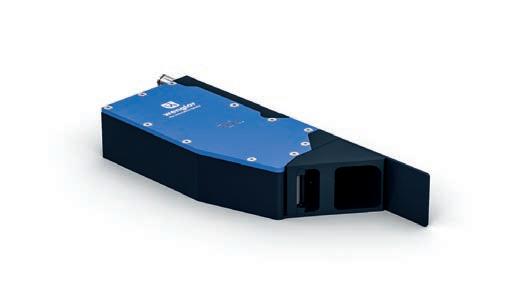
TPL VISION T: 01738 310392 www.tpl-vision.com
WENGLOR SENSORIC LTD T: 01536 313580 www.wenglor.com
ZEBRA TECHNOLOGIES EUROPE LTD T: 01628 556000 www.zebra.com
SCANWARE
Orbital inspection analyses round objects
Scanware says that its CAPA 360° orbital inspection system veri es the functionality of round objects – and ties in with automated case inspection and aggregation.
The track and trace system inspects 2D and helper codes on lidded-plastic pharmaceutical bottles prior to a lling station. Thanks to the placement of six cameras, a 360° reading area is established, allowing for quality inspection from all sides. A continuous inkjet printer is implemented, and a erwards the print is inspected for readability alongside label and lid presence and position.
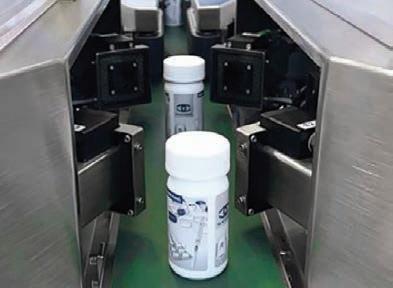
The inspection system can process up to 120 objects per minute.
Scanware can further assess the bottles on the journey to shipping, such as by aggregating data in the Impera data management so ware and inside bundlers and top loaders, according to the company.
SICK
ToF camera pushes into new safety territory
Sick says it has launched the world’s rst 3D time-of- ight (ToF) camera with safety certi cation performance level C.

This is in accordance with EN13849, which the company says sets a new milestone in safety technology.
The SafeVisionary2 is a 3D time-of- ight camera that enables reliable three-dimensional environment perception, as well as productivity-enhancing safety concepts, according to the company.
Until now, 2D Lidar sensors were used for two-dimensional hazardous area protection. In contrast, the SafeVisonary2 scans in three dimensions. This improves the availability of mobile robots by reducing collision risks – even above the scanning eld level of a safety laser scanner – and enables automatic restart in many cases. In addition, the side guard provides more personal protection when the vehicle is turning or rotating, such as a er loading and unloading.
In collaborative robot applications, safe 3D environment perception can reduce safety distances, as it reliably detects people’s upper bodies – reducing the danger of reaching or leaning over in hazardous areas. The new system also enables extended protection of the robot work area at human head height.
It also ensures higher safety when using mobile service robots. As well as the protective and warning elds for travel path protection, the camera o ers a contour detection eld that identi es fall hazards – such as those due to stairs or ramps.

Thanks to the quality of the 3D measurement data, tasks such as precise localisation and navigation support for vehicles or the detection of empty pallets – as well as object localisation and measurement – can be easily executed.
WENGLOR
www.wenglor.com
MPSoC raises performance of 3D sensors

Wenglor says the 3D sensors in its new ShapeDrive G4 product family meet high demands in the quality and availability of 3D point clouds.
Two product series, MLAS and MLBS – for small and large measuring volumes – generate high-resolution point clouds in a short time with almost no noise or artefacts. This is made possible in part by the integrated multiprocessor system-on-a-chip (MPSoC) technology, which ensures powerful performance.
An integrated Ethernet interface with up to 10 Gbit/s enables fast transmission speeds.
The combination of high-quality hardware and sophisticated algorithms ensures an excellent measuring rate and display performance. Stable and repeatable measured values are guaranteed even under uctuating ambient conditions thanks to the built-in temperature management.
The G4 sensors can be integrated via an SDK or GigE Vision interface. The built-in web server also simpli es con guration. Two of the nine sensor models have 5 MP resolution and three have 12 MP resolution. They cover small measuring volumes of 60 × 40 × 40 mm (to inspect electronic components such as circuit boards) up to large volumes of 1,300 × 1,000 × 1,000 mm, for applications such as bin picking from large containers.
Many companies rely on 3D measurement technology with micrometre accuracy. Logistics rms in particular use it for fully automated gripping and moving of chaotically arranged objects – so-called bin picking – for depalletising and robot-assisted lling and emptying of pallet cages or multiple Euroboxes.

PRODUCT UPDATES
ZEBRA
Deep learning OCR helps to get it right
Getting an OCR inspection right can be challenging. Factors including stylised fonts, characters that are blurred, distorted or obscured, re ective surfaces and complex, non-uniform backgrounds can make it impossible to achieve stable results using traditional OCR techniques.
Zebra Technologies says its new Deep Learning Optical Character Recognition (DL-OCR) system helps manufacturers and warehouse operators who need fast, accurate, and reliable ready-to-use deep learning solutions for compliance, quality, and presence checks.
The industrial-quality DL-OCR tool is an add-on to Zebra Aurora so ware, which makes the reading of text fast and easy. DL-OCR comes with a ready-to-use neural network that is pretrained using thousands of di erent image samples. It can deliver high accuracy straight out of the box, even when dealing with very di cult cases.
Users can create robust OCR applications in a few simple steps – without the need for machine vision expertise. The intuitive Zebra Aurora interface makes set-up easy.
Separate to this, Zebra has launched an advanced tier of its machine vision specialisation programme for industrial automation and machine vision. It gives customers access to Zebra’s more advanced machine vision portfolio – following its recent acquisition of Matrox Imaging. Customers will also have access to some additional features of Zebra’s Aurora so ware. Zebra has also created specially designed resources from Matrox Imaging – helping customers fully understand the portfolio.
STEMMER IMAGING
www.stemmer-imaging.com
Embedded vision system development

Stemmer Imaging has developed an embedded vision system portfolio.

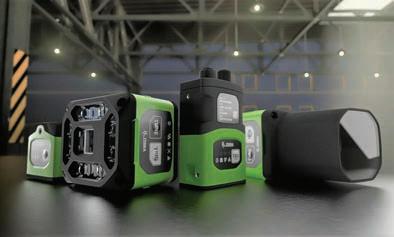
It says that Modular Embedded is a modular ecosystem based on a powerful hardware selection, combined with a range of cameras, so ware tools and individual service packages. At the heart of the system is its own carrier board paired with its own generic driver stack. It says the system is exible, easy to integrate and usable in many applications.
The board is based on NVIDIA-Jetson hardware and o ers plug and play e ciency for rapid development of embedded vision and AI projects. The Tensor Core GPU enables AI acceleration, which can improve the performance of machine-learning models.

The board can be used independently of camera and so ware vendor. Its GenICam compatibility allows a selection of cameras for all common interfaces such as GigE, USB or MIPI without the need for special programming skills.
It is designed for direct use in serial production and is suitable for high-volume applications. Interfaces are optimised for direct use in machine vision applications. Equipped with enough 10GigE, USB3 and MIPI interfaces to support exible multi camera con gurations, the hardware modules are suitable for use in a wide range of di erent machine vision applications.
“Embedded systems are particularly suitable when space is limited, and weight needs to be minimised,” said Johannes Hiltner, director of product management at Stemmer.
He cites the example of quality control for printing and packaging. High-resolution line scan cameras are typically used here. A linescan subsystem in Modular Embedded at the camera position decouples the processing system from the acquisition and pre-processing, allowing savings in hardware and allowing a more scalable solution, he says.
BECKHOFF
www.beckhoff.com
Beckhoff completes its Vision hardware range
Beckho has completed the development of its Vision-branded portfolio of hardware –including cameras, lenses, and illumination.
The Vision portfolio o ers machine builders and end users a complete image-processing system that covers all the components needed – including TwinCAT so ware. Integrated into EtherCAT-based control technology, it opens up competitive advantages for users. Bene ts include: accurate synchronisation with all machine processes; reduced engineering and hardware costs; and simpli ed commissioning and support.
Cameras include area-scan cameras that generate high-quality image data using colour and monochrome CMOS sensors with up to 24-megapixel resolution and 3.45 µm and 2.74 µm pixel pitch – and transfer rates of 2.5 Gbit/s.
Lenses include industrial C-mount lenses that ensure easy handling and high availability while also o ering a VIS and NIR AR coating and up to 2 µm resolution. The multicolor LED illumination in three designs – area, ring, and bar illumination – produces constant conditions for high-quality images. It also creates the best possible contrast between the inspection feature and its surroundings – even in spectrally adjustable pulse mode.

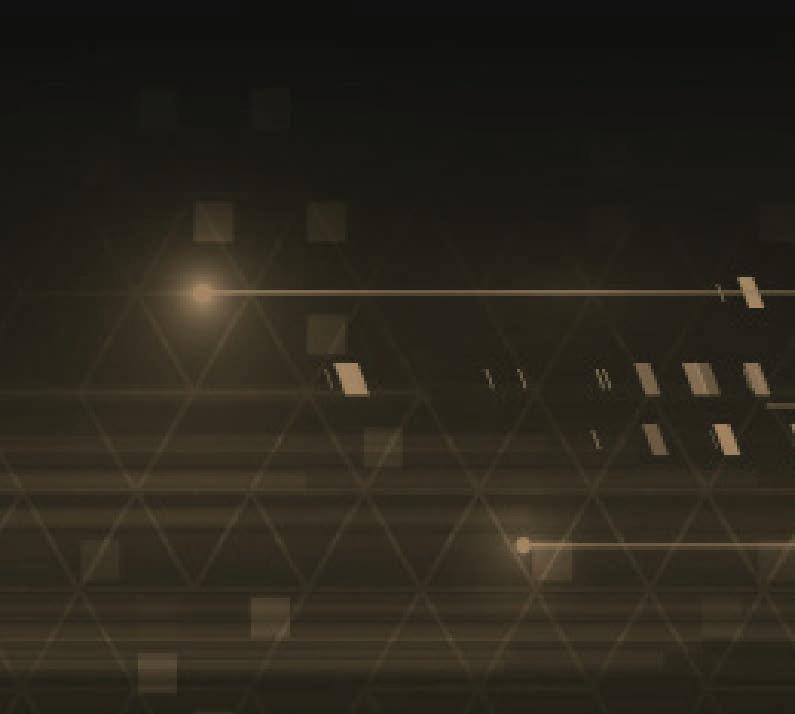

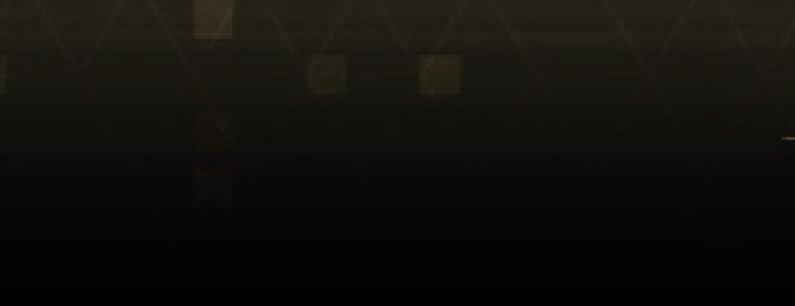




New Time-of-Flight Camera Model Complements Basler’s 3D Portfolio


The 850 nm blaze Time-of-Flight (ToF) camera offers improved stray light robustness for indoor applications and delivers precise, high-resolution 3D data in real time.
The new model in Basler’s blaze ToF camera family combines high precision, low power consumption, and low heat generation with proven blaze features. Both its compact IP67 housing and near-infrared operation at 850 nm make it particularly suitable for indoor applications in logistics and factory automation. With its large 67° x 51° field of view and a working distance ranging from 0.3 to 10 meters, the camera can capture depth data of large objects and entire scenes at once.
As with the blaze 940 nm camera variant, the new 850 nm model’s Sony IMX556-DepthSense™ sensor provides precise 2D and 3D data in one shot, consisting of distance, intensity, and confidence maps. The light source (VCSEL diodes) and lens are already integrated in the new variant, enabling precise 3D measurements based on the time-of-flight method.
Powerful blaze features for optimal 3D images
The new variant also includes the blaze ToF series feature package. Thanks to Dual Exposure HDR (for scenes with large differences in brightness) and Hardware Trigger, the cameras deliver precisely synchronized images in VGA resolution. All blaze camera models feature new bandwidth control and latency reduction, allowing for optimal GigE load management and improved real-time capability. The distinguished pylon Camera Software Suite enables the usual easy setup and provides full 3D functionality.
Comprehensive portfolio for 3D imaging

In addition to two wavelength variants (850 nm and 940 nm), Basler’s 3D product portfolio also includes a RGB solution for 3D imaging in true color. This solution combines the spatial depth data from the blaze ToF camera with RGB data from a color camera, such as the Basler ace 2. The result is a colored 3D point cloud in which each 3D point is assigned a color value, especially useful to perform classifications additionally based on object color, or to simplify scene understanding.
Basler’s stereo camera series completes the 3D range with two models designed specifically for imageguided robotics.
“This diverse range of 3D hardware and software, as well as the application software modules optimized for vision tasks in robotics, logistics, and factory automation, allows us to offer customers a wide selection of 3D vision solutions to meet their individual requirements,” emphasizes Dr. Sebastian Sauppe, Product Market Manager responsible for the Basler 3D portfolio.
Detailed information on the new blaze camera and the entire 3D portfolio can be found on the Basler website (https://www.baslerweb.com/en/products/3d-portfolio/).
PRODUCT UPDATES
Software update detects more anomalies
IDS has updated the so ware on its NXT cameras, allowing them to nd anomalies more reliably.
The IDS NXT 3.0 so ware update incorporates an AI method called Anomaly Detection, which is now available to all users of the system.

“In quality assurance, it is o en necessary to reliably detect deviations from the norm,” said the company.
“Industrial cameras have a key role in this, capturing images of products and analysing them for defects. If the error cases are not known in advance or are too diverse, however, rulebased image processing reaches its limits.”
With the IDS NXT system, users train a neural network that is then executed on the programmable cameras. To achieve this, IDS o ers the AI Vision Studio IDS NXT Lighthouse –which has easy-to-use work ows and seamless integration into the IDS NXT system. Customers can even use only ‘GOOD’ images for training. This means that relatively little training data is required, compared to the other AI methods.
Another highlight is the code-reading function in the block-based editor. This enables IDS NXT cameras to locate, identify and read out di erent types of code and the required parameters.
Attention maps also provide more transparency in the training process. They illustrate which areas in the image have an impact on classi cation results. In this way, users can identify and eliminate training errors before a neural network is deployed in the cameras.
ACROVISION
www.acrovision.co.uk
All-in-one vision system solves 3D applications

The Cognex In-Sight 3D-L4000 – available from Acrovision – is a three-dimensional (3D) vision technology that can solve a wide variety of inspections.
The system combines 3D laser displacement technology with a smart camera. Patented, speckle-free blue laser optics – an industry rst – acquire high-quality 3D images. On-board processing powers a set of true 3D vision tools, without the need for external processing. The 3D vision tools are as easy to set up as 2D vision tools thanks to the In-Sight spreadsheet environment.
The instrument allows users to place vision tools directly onto a true 3D image of the part. Typical 3D systems transform 3D images into a representational 2D height map for basic tool processing, says the company. True 3D inspections increase accuracy and expand the types of inspections that can be performed.
Because inspections are in 3D, users can immediately experience how the vision tools operate on the actual part or component.
The 3D-L4000 includes the traditional 3D measurement tools that users expect – such as plane and height nding. However, it also includes a full suite of 3D vision tools, to leverage inspections in a true 3D space.

The vision tools were created with the simplicity of 2D in mind – making them more accessible to the user.
QUANTUM DESIGN www.qd-uki.co.uk
VGA sensor has high VIS-SWIR detection limit
The Owl 640 T, available from Quantum Design (QD), is the latest variant of the Owl 640 family from Raptor Photonics.

QD says it is the world’s rst Swap-optimised ½”/VGA InGaAs sensor with a 10µm x 10µm pixel pitch.
The Owl 640 T o ers a spectral response from 0.6µm to 1.7µm and has less than 50 electrons readout noise, with a high intra-scene dynamic range of 69dB that enables simultaneous capture of bright and dark portions of a scene. The sensor enables a high VISSWIR detection limit.
Available with a 12-bit camera link output, it runs from 10 to 60Hz. The camera features an on-board automated gain control (AGC) which enables the best contrast imaging from a dark to bright imaging scene, as well as an on-board intelligent three-point non uniform correction (NUC), providing high-quality images.
The Owl 640 T o ers ½” optical design, taking advantage of a smaller and lighter lens. The camera is aimed at the Mini UAV and gimbal market and hand-held integrated systems. As with all Raptor cameras, the unit is compact and rugged. The camera uses a thermometric cooler to stabilise the sensor temperature – with no need for a fan.
PRODUCT UPDATES
Camera range upgraded to 5GigE capability
Basler has introduced its 5GigE product range – which encompasses both hardware and so ware.

The new range is based around 12 models of its Ace 2 camera. The cameras sit in the same 29 x 29mm size envelope but have a ve-fold increase in Gigabit Ethernet data transmission rate, compared to existing models.
Six of them are equipped with Sony’s 4th generation Pregius S CMOS sensors (the IMX540, IMX541 and IMX542), giving them high resolutions of 24, 20 and 16 megapixels, respectively. Six others use IMX545, IMX546 and IMX547 sensors, and o er medium resolutions of 12, 8 and 5 megapixels, respectively. Both types are available in mono and colour variants.
In addition, Basler has introduced four other compatible product groups: lenses, cables, PC cards and so ware. The PC cards connect the cameras to the host PC. The GigE cable allows up to 50m of error-free transmission of image data, while the I/O cable allows up to 10m for precise control of a camera or vision system.

Basler’s expanded Pylon camera so ware suite enables an easy upgrade from USB 3.0 setups or direct replacement of an existing GigE system.
“Our customers want e cient solutions – which is why the reliable interaction of all components of our 5GigE portfolio is a priority for us,” said Felix Chemnitz, product market manager at Basler.
“It simpli es the operation of the camera setup, saves time during integration, and reduces overall system costs on the customer side.”
ALRAD
High-speed SWIR camera uses InGaAs sensor
Alrad Instruments has introduced a high-speed SWIR camera from First Light Imaging. The C-Red 2 Lite very high speed compact stabilised SWIR camera covers the infrared spectrum from 0.9 to 1.7µm. It has a full resolution frame rate of 600 fps at 640 x 512 pixels and up to 32,066 fps with ROI.
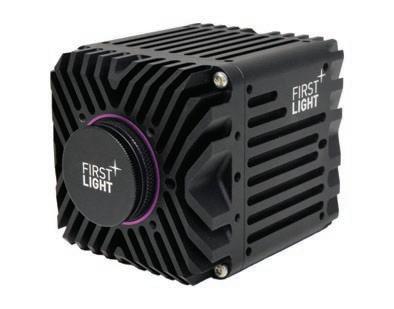
The camera uses an InGaAs 15µm pitch sensor and provides a 93dB high dynamic range and true 16-bit operation. The C-Red 2 Lite is a very low noise camera suitable for SWIR exposure times of up to several minutes with a quantum e ciency of more than 70 and readout noise at high gain of 30e-.
The industrial design of the camera includes TEC temperature stabilisation with use of a smart algorithm. This removes the need for a cooling fan and allows for easy integration. The camera can be further cooled with optional passive heat sinks or a hydraulic cooling plate, says the company.
Interface options include USB 3.1 or CameraLink with a C or CS lens mount. Alrad provides a range of SWIR lens options and both standard and high-powered infrared illumination. The cameras are supplied with First Light Imaging’s GUI and a so ware development kit (SDK) – allowing self-developed solutions under Linux, Windows and other systems. The SDK is compatible with systems including µManager, LabVIEW, MatLab, C, C++ and C#, Python and Halcon.
Applications include non-destructive inspection, quality and production control, waste sorting, welding control, additive manufacturing and laser beam pro ling.
KEYENCE
www.keyence.co.uk
Stripe patterns find hard-to-spot variations
Keyence has produced a new pattern projection lighting system that can accurately capture target appearance – allowing stable detection of di cult-to-spot variations.
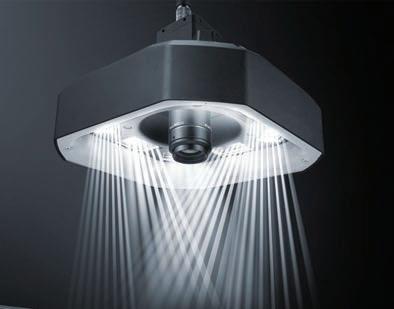
This system can perform detailed defect inspection on large targets and is compatible with a wide range of ultra-high-resolution cameras for any application.
Cutting-edge algorithms, combined with the addition of height data, provide simultaneous 2D and 3D inspection, to improve inline stability.
Multiple stripe patterns are rapidly projected onto the target. Then, an ultra-high-speed CMOS sensor and processor analyse the light re ected from the targets in real time to generate a 3D image.
These sophisticated inspection features have been made intuitive and easy-to-use with simple menu-driven settings that mean that any user can set up and operate the system with ease.
The system was developed in collaboration with key partners in the manufacturing industry, says the company.
Machine Vision: Important part of smart factories
Connecting robots and machines is quickly becoming the standard in modern factories. A er all, the more consistently all components involved in the various production phases can communicate with each other, the more autonomous, intelligent and e icient this process can be. For many decision-makers, the idea of automating their factory may seem like an insurmountable mammoth task. But the key – as in many cases – is to proceed step by step.
A key technology that enables continuous process monitoring and quality inspection in the production process is machine vision. Industrial cameras, some of which are equipped with AI, act as the eye and therefore make it possible for machines and robots to react according to their specific situation. As a result, cameras make a decisive contribution to the automation of production. But what does this mean in particular?
How industrial cameras help to see robots and machines
Industrial cameras are already used in a wide range of industries: from equipment, plant and mechanical engineering to medical technology, agriculture and logistics. They take on a wide range of tasks, for example in in-line quality inspections and general quality control. Linked to the production line, they check the products for deviations or defects so that those products can be sorted out before they leave the production hall. Compared to the human eye, machine vision systems work faster, more accurately and more reliably, as they do not miss any detail even at high cycle rates. In addition, employees can be relieved of “monotonous” sorting and inspection tasks that are mentally challenging.
be sorted on a conveyor belt according to di erent quality characteristics, an industrial camera like the IDS NXT rio and rome models with integrated image processing can precisely distinguish “good” from “bad” or even other classes on the basis of artificial intelligence.
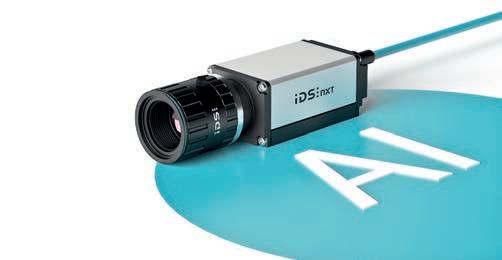

Become fit for the challenges of Industry 4.0


In so-called embedded vision systems, the processing of the “seen” data as well as the resulting control takes place “on device”. With embedded cameras, it is also possible that the derived commands are directly passed on to a robot. Therefore, the transmission of data and results to and evaluation by an external PC becomes superfluous. Another benefit is that corresponding systems can be integrated into the production line in a space-saving manner.
Why artificial intelligence is breaking new ground in image processing
Industrial cameras with artificial intelligence (AI) go one step further. They open up completely new fields of application that cannot be handled by conventional image processing. While many robots do not understand their environment and can only work command-based, AI-based systems enable them to react adaptively. This capability becomes necessary, for example, when recognising and processing highly varying objects, such as food, plants or other organic objects. Colour, surface, size, weight or shape, for example, show a large variance in natural products. However, AI can be trained in such a way that a broad spectrum can be reliably recognised, categorised and therefore also processed. If, for example, fruit needs to
Whether sorting, inspecting, supplying or documenting items and goods –many steps in the production process can be optimised through the use of machine vision. In particular, companies that are just at the beginning of their automation project benefit from easy-to-use cameras that they can use as needed. Even without a holistic smart factory concept, a company’s production can be made fit for the future challenges of Industry 4.0 with such solutions and key technologies. IDS Imaging Development Systems o ers a wide range of cameras for this purpose, with di erent interfaces, sensors, housing variants and even as an all-in-one AI vision system. A er all, many companies lack know-how and time to familiarise themselves with the field of AI to use the technology for their needs. To remain successful in the long term, it is advisable to start exploring the possibilities sooner rather than later. The AI vision system IDS NXT is designed to help with this, as it can be operated quickly and easily by any user group – even without in-depth knowledge of machine learning, image processing or application programming. It therefore o ers an excellent basis for the intelligent use of image processing.
A NEW EMBEDDED VISION.




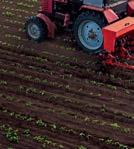


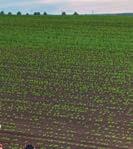

















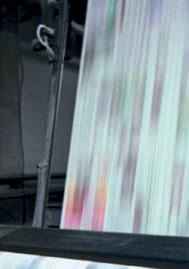























STEMMER IMAGING MODULAR EMBEDDED.









Modular Embedded by STEMMER IMAGING is a new step in the world of embedded vision systems. Setup as a comprehensive ecosystem, Modular Embedded relies on the most powerful hardware selection combined with a huge variety of state-of-the-art cameras, the best software tools and individual service packages. In sum, everything you need from one single source with expert knowledge you can rely on.


With Modular Embedded you can create an easy to integrate and ready-to-use embedded vision subsystem which acquires the image data needed by your application easily and quickly, thus enabling you to focus on the image processing and data evaluation tasks right from the start. Accelerate integrating embedded vision into your applications and products.

TPL VISION
Small-scale light includes angle changers
TPL Vision has extended its Modular range with the addition of the Modular Tiny Bar light (M-TBAR). The product will be seen at MVC 2023 in Coventry.
This addition o ers high exibility to users, providing a convenient way of illuminating small-scale vision applications that require robust lighting.
The M-TBAR was designed to improve machine vision applications working in con ned spaces and provide users with the option of customising their illumination output. The angle changers securely clip onto the bar light. This allows users to adjust the beam angle easily – to suit ambient lighting conditions, test di erent options or make modi cations.
It is available in ve colours, suited to vision systems requiring robust illumination for inspection, code reading, robotics, labelling and other applications. Its IP67-rated housing and mounting exibility guarantee easy integration and maximum convenience for applications where a limited space is available.
BYTRONIC
OCR tool offers advanced character inspection
Cognex has added optical character recognition (OCR) to its entry-level In-Sight 2800 smart camera – allowing complex industrial inspections to be carried out with automated vision.
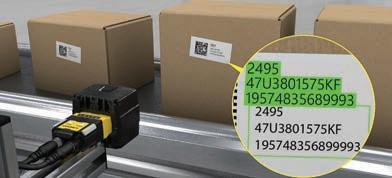
The ViDi EL Read update is an edge-learning tool that ensures high read-rates of characterbased codes, even on re ective, low-contrast or uneven surfaces. It can read multi-line text or decipher challenge texts and font types – even in low-light situations.
In-Sight 2800 combines AI and customisable, modular hardware add-ons with traditional rule-based vision tools.
ViDi EL Read is available from Cognex UK logistics partner integrator Bytronic Vision Intelligence.

“This update is a huge boost to what is already a powerful piece of kit,” said John Dunlop, founder and chief technology o cer at Bytronic. “Whether on the factory oor or in despatch, keeping lines running and meeting quality standards are essential. ViDi EL Read can automate quality control without line stoppages in hard-to-read or variable situations that once only humans could handle.
CLEARVIEW IMAGING
www.clearview-imaging.com
Robust new camera simplifies OEM integration
Teledyne FLIR’s Forge 5GigE is a 5MP, 120fps camera with a Sony IMX54 sensor.
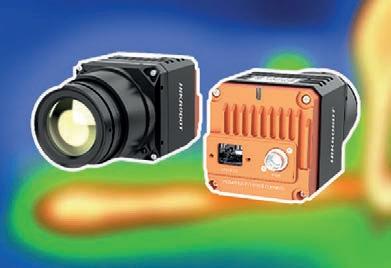
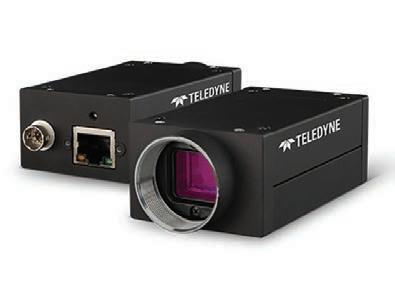
It will later be joined by further models with high resolution and frame rate options. It is available in the UK from Clearview Imaging.
Constructed on an all-new platform, Forge is designed to o er a combination of on-camera pre-processing features, use advanced sensors, and support the Trigger-to-Image Reliability (T2IR) framework for easy-to-build, robust systems.
As well as supporting link speeds of 1, 2.5, and 5GigE, it includes burst mode to capture images at speeds up to 10Gb/s into memory. This, combined with a 500 MB image bu er, allows engineers to control data transfer without overwhelming the host.
The camera is designed to simplify OEM integration with features including PoE, strong thermal management and opto-isolated triggering for streamlined peripherals and easier camera control. It allows current system performance to be upgraded without changing the application so ware.
MULTIPIX
LWIR camera supports multiple palette modes
Hikrobot has developed a new long wave infrared (LWIR) camera, available in the UK from Multipix Imaging.
The MV-CI003-GL-N15 camera o ers a resolution of 640 × 512 (0.3MP) delivered by a highsensitivity, vanadium oxide uncooled detector. It supports multiple palette modes including greyscale, white hot, black hot, fusion 1 and rainbow.

The camera is compatible with the GigE Vision V2.0 Protocol, GenlCam Standard, and third-party so ware based on these. It allows data transmission up to 100m without the need for a relay.
It has a compact design of 58 x 58 x 102.5mm, with mounting holes on panels for exible mounting from four sides. Having a 15mm lens – and an FOV of 42.4° × 33.6° – makes it appropriate for applications such as photovoltaics, lithium batteries and consumer electronics.

